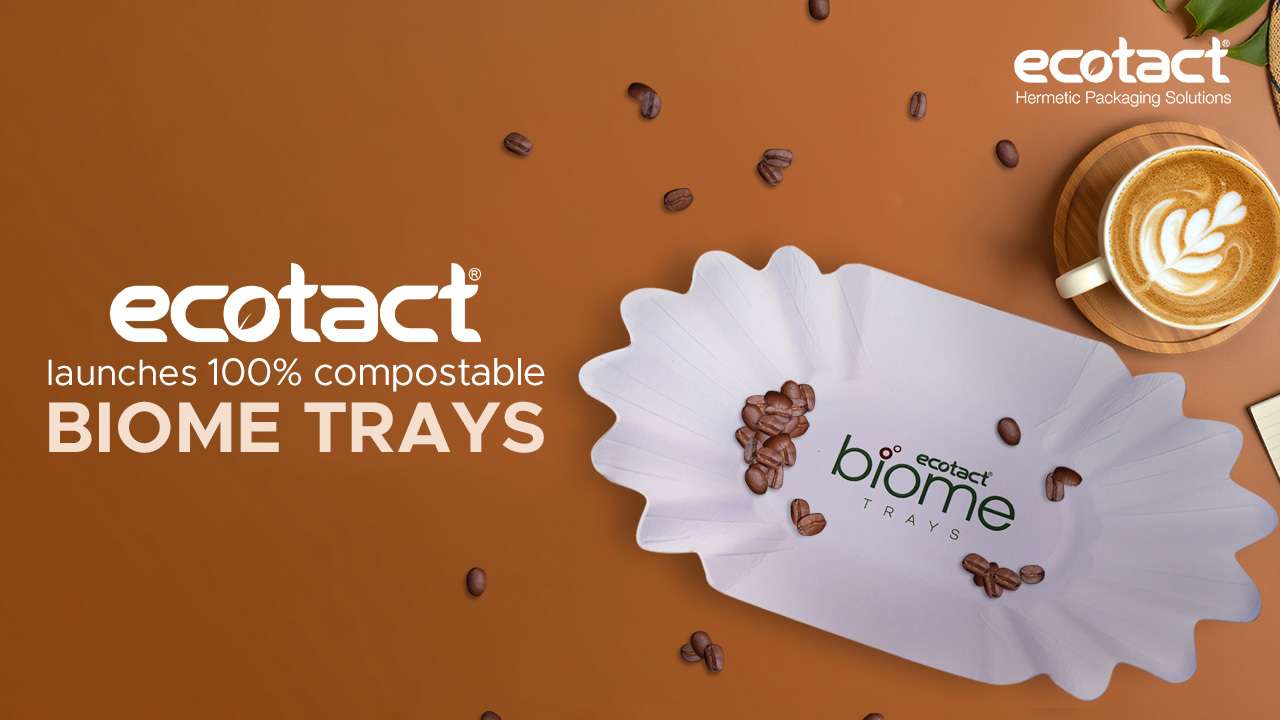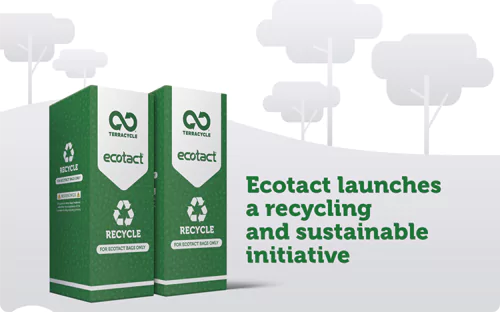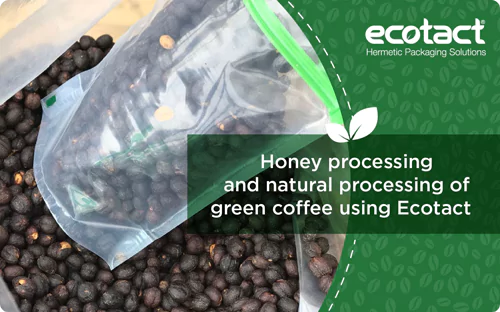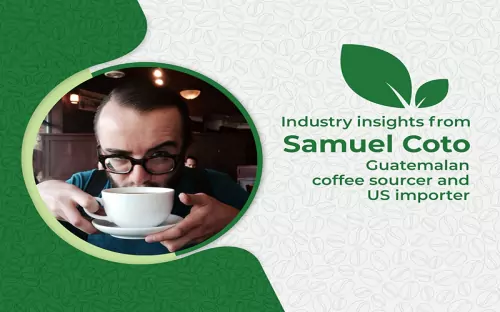From quality hermetic packaging to completely recyclable storage bags, Ecotact has left no stone unturned while catering to the needs of farmers, suppliers & buyers. But to diversify its product portfolio, Ecotact launched its first-ever coffee sampling tray labeled as ‘Biome Trays’ on International Coffee Day 2022.
A business in the packaging industry comes with a spirit of high and healthy competition, and hence, only the best products set everlasting impressions to stay in the game.
All you need to know about the Biome Trays
With Ecotact proudly serving as one of the leading hermetic packaging solutions in the industry, Biome trays are yet another milestone. But before delving into the product, let us understand that coffee cupping is a professional practice of noting the taste and aroma of brewed coffee samples. The Q-graders or the experts who perform this practice sniff the coffee, then gently take a sip with a spoon to get the exact taste of what the beans bring to the table. Coffee tasters critically analyze the texture, flavor, sweetness, acidity and aftertaste of the coffee sample.
The Biome trays are designed to let a professional experience an optimal coffee cupping session. These lightweight trays are flexible with no brittleness due to their carefully planned composition. Being eco-friendly and completely compostable, these coffee trays offer sustainability in a holistic manner. Despite the fact these are paper trays, their sturdiness and strength make them stay intact even under high temperatures. With the rising awareness of opting for recyclable products, these Biome trays ensure they meet every box of being a sustainable choice in every way for years to come.
How to go about composting these Biome trays?
Before diving into the composting process, it is essential to have a site for conducting this process in a step-by-step manner. Ecotact ensures that the Biome trays are composted at an industrial compostable site which is managed by the local municipality or similar authority in a fully standardized manner.
Essentially, there are 2 core composting processes that are covered by Ecotact.
Aerated Static Pile Composting
In-vessel Composting
Let’s begin with Aerated Static Pile Composting.
The Biome trays are decomposed by placing them in a pile on top of an air supply system that supplies O2 & manages temperature while producing compost. The pile of trays should be insulated in order to maintain temperatures up to 55°C. This kind of composting process works with a homogenous mix of organic waste and yields results relatively faster i.e, within 3-6 months.
The aerated pile is exposed to layers of loosely piled bulking agents such as chipped wood or newspaper shreddings, which are added to evenly distribute the air from the base to the pile top.
Yet another way is by placing the piles over a network of pipes that release or deliver air out and into the pile respectively.
The Aerated Static piles are designed as forced aeration composting systems for carefully designed blended piles of organic residuals.
Type of organic waste used: Larger portions of yard trimmings and compostable solid waste such as food scraps generated by landscapers or farms can be utilized here.
Key principle: Regulate the pressure and direction of airflow to control the pile temperature by using either suction or pressure blowers, zone dampers or bidirectional dampers.
Steps to follow during Aerated Static Pile composting:
The first step is to ensure that the first few hours are spent monitoring that the Ecotact Biome Trays are evenly mixed along with the moisture content and porosity levels after receiving the organic waste.
By placing the mixture in Aerated Static Pile, shield it with a biofiltration layer and aerate it at a very high rate of airflow that should be later redirected alternatively for up to 3-5 days to keep the pile temperature below 45°C and reflect a pH level above 6.5.
As the next step, the temperature levels should fall between 55 to 65°C along the pile with alternating airflow during the sanitation period of 3 days. Post this, the temperature levels should be toned down to 45°C again.
After a span of 2 weeks, break down the ASP along with rewatering & turning with windrow turners until the pile is homogenized and stabilized.
The second process of composting is known as In-vessel Composting.
During this process, the compostable materials are stored in a container and thoroughly mixed, broken down, and aerated by the system.
Some of these systems are fully automated with sensors that keep a track of the temperature in a thermophilic range to ensure the microbial efficiencies are its peak, oxygen levels and moisture content. For an aerobic activity to occur, the optimal oxygen supply is >10% and the moisture content should be within 40-60%.
The aeration & agitation are modified by temperature, moisture, oxygen feedback or cycle liners.
Whereas the agitated systems help in particle fragmentation that offers microorganisms higher accessibility to carbon for better decomposition.
They utilize biofilters to faint out or completely get rid of the pungent odors.
The in-vessel composting process is a preferred method of composting in institutions that produce large amounts of compostable materials but are confined to a smaller area for execution.
Type of organic waste used: Municipal solid wastes, sewage solids; manure, agricultural wastes, industrial wastes, logging, and wood; manufacturing residues, or miscellaneous organic wastes.
Key principle: Ensure even distribution of air in any type of aeration system design.
While performing in-vessel composting, there are 2 kinds of processes that take place with the vessels.
Batch
Continuous
Batch: The material is processed simultaneously as a batch without any addition of new materials.
Continuous: The raw materials are added continuously in regular intervals and undergo compostability as they move around and are churned out of the system through the opposite end for disposal.
Steps to follow during In-vessel composting:
Before placing the mix in the vessel, the mixture and the Biome trays are blended with optimal porosity levels, particle size, moisture content, carbon-to-nitrogen ratio, substrate concentration and quality.
Maintaining thermophilic temperature along with rapid decomposition and high odor potential where pathogens and weed seeds are destroyed. The time duration for the same usually lasts up to 2-3 weeks.
Once the microbial activity is stabilized and the pile cools off, the process is almost complete.
The activity can occur either within the composting vessel, stored separately or even in aerated static piles. There isn’t usually a production of odorous compounds and the process usually takes at least a month.
 English
English
 Spanish
Spanish French
French


